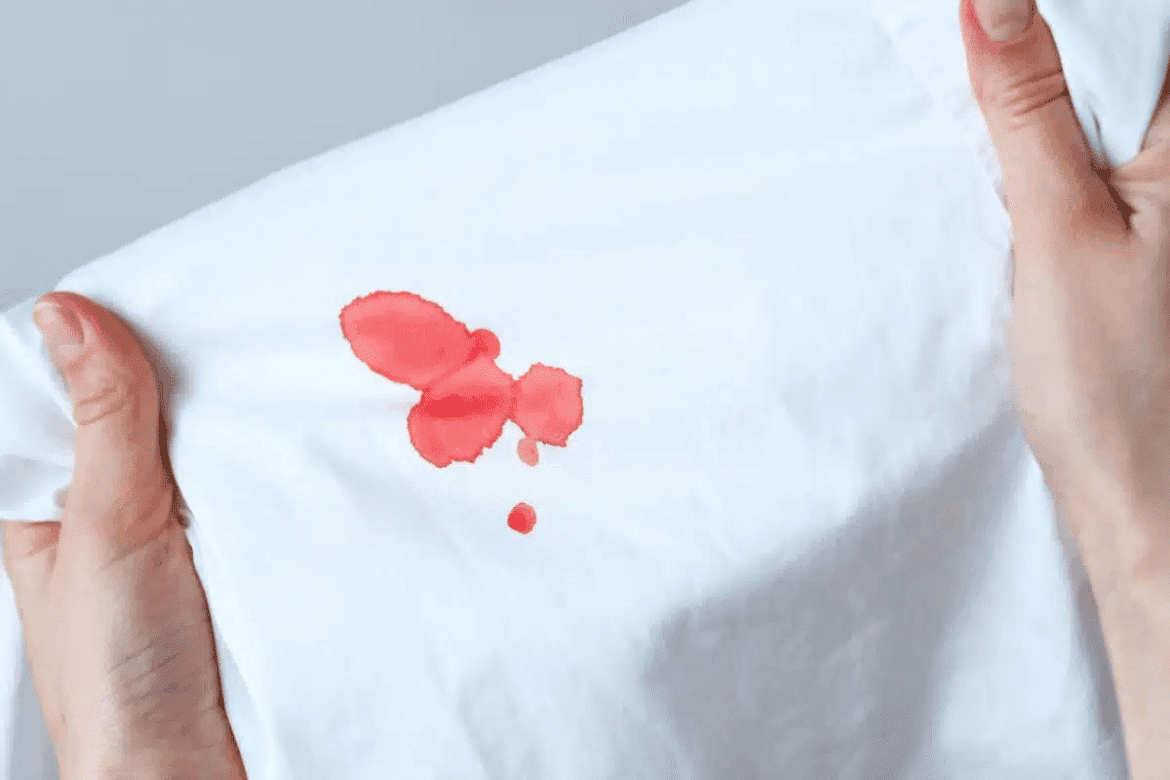Whether on the sofa, a blouse, or bed sheets: with our tips, you can even remove blood stains once they have dried. Of course, it’s easiest with fresh stains. But even then, mistakes can be made.
Removing blood stains: how to treat fresh stains
Don’t let blood stains sit: Fresh blood stains can usually be washed out completely, but older, dried stains are more difficult to remove. With the right method, however, both fresh and dried blood stains can be completely removed in many cases. The most important things are to act quickly, use the right cleaning agent, and use the correct water temperature.
- First, however, it is important to know that regardless of whether you are treating fresh or older blood stains, you should never use warm or hot water. This is because the protein in the blood coagulates at high temperatures, causing the stain to become permanently embedded in the fabric.
- Therefore, always rinse blood stains with cold water. You should also select the cold wash cycle in the washing machine.
- If the stain is still fresh, there is a good chance of removing it completely from the material: Hold the garment under cold running water immediately and rub the stain carefully out of the fabric.
- You can also pre-treat the garment before washing: Apply a little gall soap or an enzymatic detergent directly to the stain. These agents break down the protein components in the blood. The agent should therefore be left to work for about 30 minutes.
- Then wash the affected garment in the washing machine. Use cold or lukewarm water for this as well.
- Modern washing machines often have special stain removal options that target blood and protein stains. These programs control the temperature, soaking times, and drum movements so that stains are removed gently but thoroughly. Check the manual for your machine to see if it has this feature.
Removing dried blood stains: How to do it
If the blood stain is old and dried, it is a little more difficult to remove, but not impossible. Old stains definitely require more patience.
- Place the affected fabric in cold water with a little enzymatic detergent for several hours or overnight.
- Then rub gall soap or a special stain remover onto the stain. Newer pre-treatment products use enzymes that specifically break down proteins such as hemoglobin – this is particularly effective for blood.
- Then wash the garment as usual, using the gentle cycle for delicate fabrics.
- Is the stain still visible after washing? Then repeat the treatment: a second round is often necessary.
- Some people also swear by home remedies such as baking soda or salt, which they apply to the stain or directly into cold water to soak.
- However, be careful with delicate fabrics such as silk, wool, or cashmere. Aggressive agents such as citric acid, hydrogen peroxide, or chlorine bleach can damage or discolor these materials or destroy the fibers.
- For such fabrics, you should only use mild products that are explicitly suitable for delicate fabrics. If in doubt, professional cleaning is recommended.
Removing blood from upholstery and carpets correctly
Cleaning upholstery and carpets is a little more time-consuming, as they usually do not fit in the washing machine. Here, too, we have tips on how to remove blood stains effectively:
- The same applies here: first rub the fabric thoroughly with cold water. If any stains remain, use a carpet or upholstery cleaner.
- Potato starch has also proven effective. Mix it with water to form a paste and apply this to the stain. After leaving it to work for a while, remove everything with plenty of clean water.
- However, potato starch is less effective than modern enzymatic cleaners. You should therefore consider this home remedy as a first aid measure.
- Alternatively, you can use gall soap and special stain removers available from retailers. However, you should first test the fabric for color fastness on an inconspicuous area.

